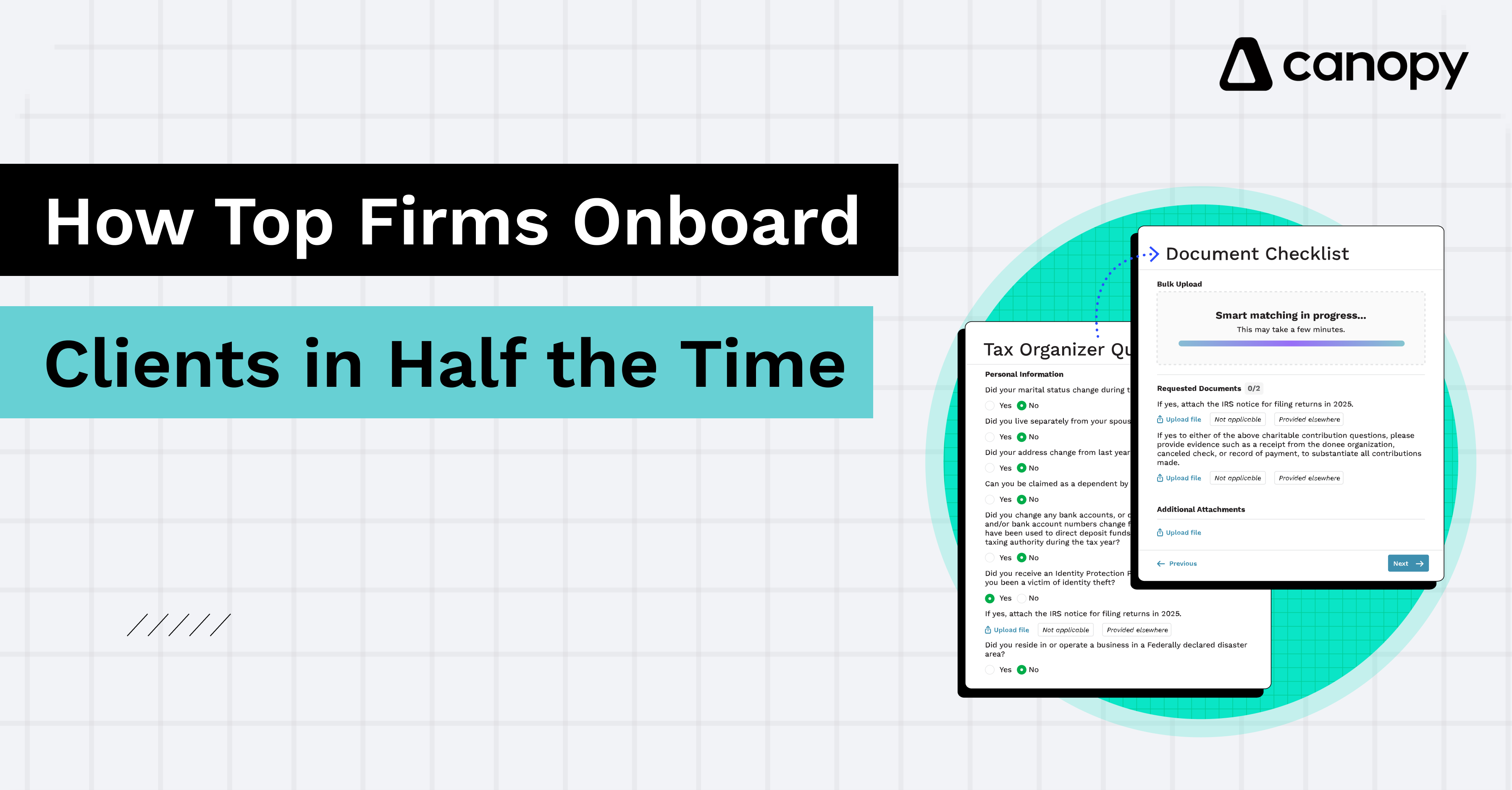Highlights:
Under-resourced corporate tax departments are 50% more likely to incur penalties due to a reactive workflow, which also leads to missed tax optimization opportunities, compromised forecasting, and ironically, higher external support costs.
To mitigate risk, tax leaders can use report data to build a business case for investment, prioritize technology for compliance and automation, leverage GenAI for efficiency, and shift even 10% of their team’s time to proactive work.
The fundamental solution is a strategic shift from reactive compliance to proactive analysis, a transition enabled by technology and process improvements that reduces penalties, builds departmental confidence, and increases strategic value to the business
The hidden costs of under-resourcing tax departments
Why the corporate tax penalty gap exists
Five strategies to break the cycle for corporate tax departments
The confidence gap: Resources drive performance
The path forward for tax leaders
Download the full report
If you’re leading an under-resourced corporate tax department, here’s a sobering statistic: your team is 50% more likely to incur penalties than adequately staffed departments. According to the Thomson Reuters Institute’s 2025 State of Corporate Tax Department report, half of all respondents from under-resourced departments reported penalties in the past year, compared to just one-third from departments with adequate resources.
The math is simple, but the implications are profound. Under-investment in tax departments doesn’t just create operational headaches—it directly impacts your bottom line through avoidable penalties, missed tax-saving opportunities, and increased audit exposure. Yet, 58% of survey respondents report that their departments remain under-resourced, a seven-percentage-point increase from just last year.
The question isn’t whether resource scarcity creates risk. The data proves it does. The real question is: what can tax leaders do about it?
The hidden costs of under-resourcing tax departments
Penalties are the most visible consequence of stretched tax departments, but they’re far from the only cost. The report identifies several cascading effects that compound over time: Missed tax optimization opportunities. When teams spend more than half their time in reactive compliance mode—as most respondents report—there’s little bandwidth to identify overpayments, optimize tax structures, or claim available credits. These aren’t small oversights; they represent potentially millions in unrealized savings.
Compromised forecasting accuracy. Only 26% of respondents from under-resourced tax departments say it is very likely that they could provide timely and accurate forecasting for the business, while 43% of respondents from departments seen as sufficiently resourced say they could. In an environment of political uncertainty and constantly shifting regulations —cited as a top challenge in 2025—this forecasting gap leaves businesses flying blind.
Talent retention and burnout. Under-resourced departments often ask existing team members to work longer hours and overtime to pick up the slack created by retirements, though fewer respondents reported this strategy in 2025 (14% versus 19% in 2024). Still, the pressure remains intense. One respondent captured the frustration: “There are always last-minute issues or problems to resolve that don’t allow time for us to be more proactive and forward-looking.”
Higher external costs. Ironically, under-resourced departments tend to spend a higher proportion of their budget on external tax support (44%) than do fully resourced departments (37%). When you lack internal capacity, you’re forced to outsource more work, creating a costly cycle that perpetuates the resource gap.
Increased stress and delayed initiatives. Beyond the financial metrics, under-resourced departments face delayed business initiatives due to tax work bottlenecks and increased stress among team members, factors that compound over time and impact both talent retention and strategic contribution.
Why the corporate tax penalty gap exists:
The connection between resources and penalties isn’t coincidental—it’s structural. Under-resourced departments face a perfect storm of risk factors:
They’re operating with outdated technology that can’t keep pace with complex, multi-jurisdictional compliance requirements. They lack the staff bandwidth to conduct thorough reviews before filing deadlines. They’re forced into perpetual reactive mode, addressing immediate crises rather than implementing preventive controls.
The data reveals another troubling pattern: 56% of respondents who spend more than half their time in reactive mode say their departments faced penalties, whereas only 31% of respondents who dedicated more than half of their time to proactive work say their departments incurred penalties. Reactive work breeds errors; proactive work prevents them.
The severity of these penalties varies considerably. While almost two-thirds (65%) of respondents say the total dollar value of the penalties their departments faced amounted to less than $100,000, 12% of them say the penalties totalled more than $1 million. For companies already struggling with resource constraints, these penalties represent a significant and entirely avoidable drain on capital.
Five strategies to break the cycle for corporate tax departments
While securing additional budget and headcount remains the ideal solution, tax leaders can take concrete steps to mitigate penalty risk even within resource constraints:
1. Make the business case with data
Use statistics from the 2025 State of the Corporate Tax Department report to quantify the financial impact of under-resourcing. Calculate your department’s penalty costs over the past three years, then estimate missed tax-saving opportunities. Present this to leadership not as a plea for resources, but as a risk-mitigation investment with measurable ROI.
Key talking points:
Under-resourced departments are 50% more likely to incur penalties
The confidence gap: Only 24% of under-resourced departments feel confident they can avoid penalties next year, versus 37% of adequately resourced departments
The forecasting deficit: Under-resourced teams are 65% less likely to provide accurate, timely forecasting—a critical capability in today’s uncertain regulatory environment.
2. Prioritize technology investments strategically
More than half (52%) of survey respondents say their in-house tax departments expect at least some additional budget to invest in new tech tools and capabilities over the next couple of years. Focus initial investments on proven solutions that deliver immediate accuracy improvements. The report shows that the most widely adopted tax technologies continue to be focused on direct tax compliance, tax provision, and indirect tax reporting and calculation. These aren’t the flashiest tools, but they’re the ones that directly reduce penalty risk. Smaller companies in the survey have succeeded by getting buy-in from senior management for technology purchases and adoption. They also worked with third-party vendors to help automate their tax processes rather than trying to build everything themselves.
3. Automate ruthlessly (starting small)
You don’t need a complete ERP overhaul to reduce penalty risk. Identify your three highest-volume, most error-prone processes and automate those first. Even basic workflow automation can free up time for quality reviews before filing deadlines. More than half (51%) of respondents say their department’s main resourcing strategy involves introducing more technology and automation, up from 45% in 2024. The momentum is building, and now is the time to join it.
4. Leverage GenAI for efficiency gains
While two-thirds (67%) of respondents to this year’s survey say their department is not using GenAI, at least yet, those who are report time savings on research, document summarization, and communication.
Unlike major technology investments, GenAI tools are accessible at minimal cost—potentially levelling the playing field for under-resourced departments. Of those respondents at departments that are implementing new technologies, 57% say their new technology would include GenAI, signalling that early adopters see real potential.
Start experimenting with tax-specific applications for routine research tasks. The true value will be measured in time saved on repetitive activities, allowing you to redirect attention to complex work that requires human judgment.
5. Shift even 10% of the time to proactive work
The report reveals that tax professionals spend more than half their time on reactive work, primarily focused on compliance. They would prefer to spend about two-thirds of their work time on strategic and proactive analysis.
While that ideal may seem impossible, shifting even 10% of your team’s time to proactive compliance reviews, control testing, and process documentation can significantly reduce penalty exposure. The data proves it: departments that dedicate more time to proactive work face dramatically fewer penalties.
Practical steps to reclaim time:
Implement a “no-meeting” morning twice per week for focused proactive work
Create standardized checklists and templates for recurring compliance tasks
Delegate routine data gathering to junior staff or automated systems
Schedule quarterly “process improvement” sessions to identify efficiency gains
The confidence gap: Resources drive performance
Beyond penalties, adequate resourcing affects every aspect of tax department performance. Only about one-quarter (24%) of respondents who say their department is under-resourced say they are very likely to avoid incurring penalties in the coming year, whereas 37% of respondents from adequately resourced departments say they are confident they could avoid penalties. This confidence gap extends to other critical capabilities:
Providing timely and accurate forecasting
Minimizing the company’s tax burden
Contributing strategically to organizational objectives
The relationship is clear: resources enable proactive work, proactive work builds capability, and capability drives both confidence and results.
The path forward for tax leaders
The most encouraging finding in the report is that roughly half of respondents say their tax departments are also actively planning to introduce new technology or automation into their workflows soon, especially technologies that are supported by machine learning and GenAI. This suggests tax leaders recognize that technology is the lever that can help under-resourced teams punch above their weight.
But technology alone won’t solve the problem. It requires leadership commitment, strategic planning, and a willingness to make the business case for adequate resourcing. The penalty gap between under-resourced and adequately resourced departments—50% versus 33%—represents a clear and quantifiable risk that should command executive attention.
One survey respondent says that “having overall control of all tax processes through a digital platform, then creating greater value through tax-cost optimization” is their tax team’s most fervent wish. This vision is achievable, but it requires both the right tools and sufficient resources to use them effectively.
Download the full report
The cost of doing nothing is no longer theoretical. It’s showing up in penalty notices, audit findings, and missed opportunities. The question for tax leaders is whether they’ll use this data to drive change—or wait for the next penalty to make the case for them.
Ready to build your case for change? Download the complete 2025 State of the Corporate Tax Department report to access:
Detailed benchmarking data on staffing, budgets, and technology adoption by company size and region
A comprehensive roadmap for tax optimization and technology implementation
Insights from 288 tax leaders worldwide on priorities, challenges, and strategies
Actionable frameworks for moving from reactive to proactive tax operations
The data is clear: adequate resources aren’t a luxury—they’re a necessity for managing risk, ensuring compliance, and positioning your tax function as a strategic partner to the business. Don’t let another penalty cycle pass before taking action.



























